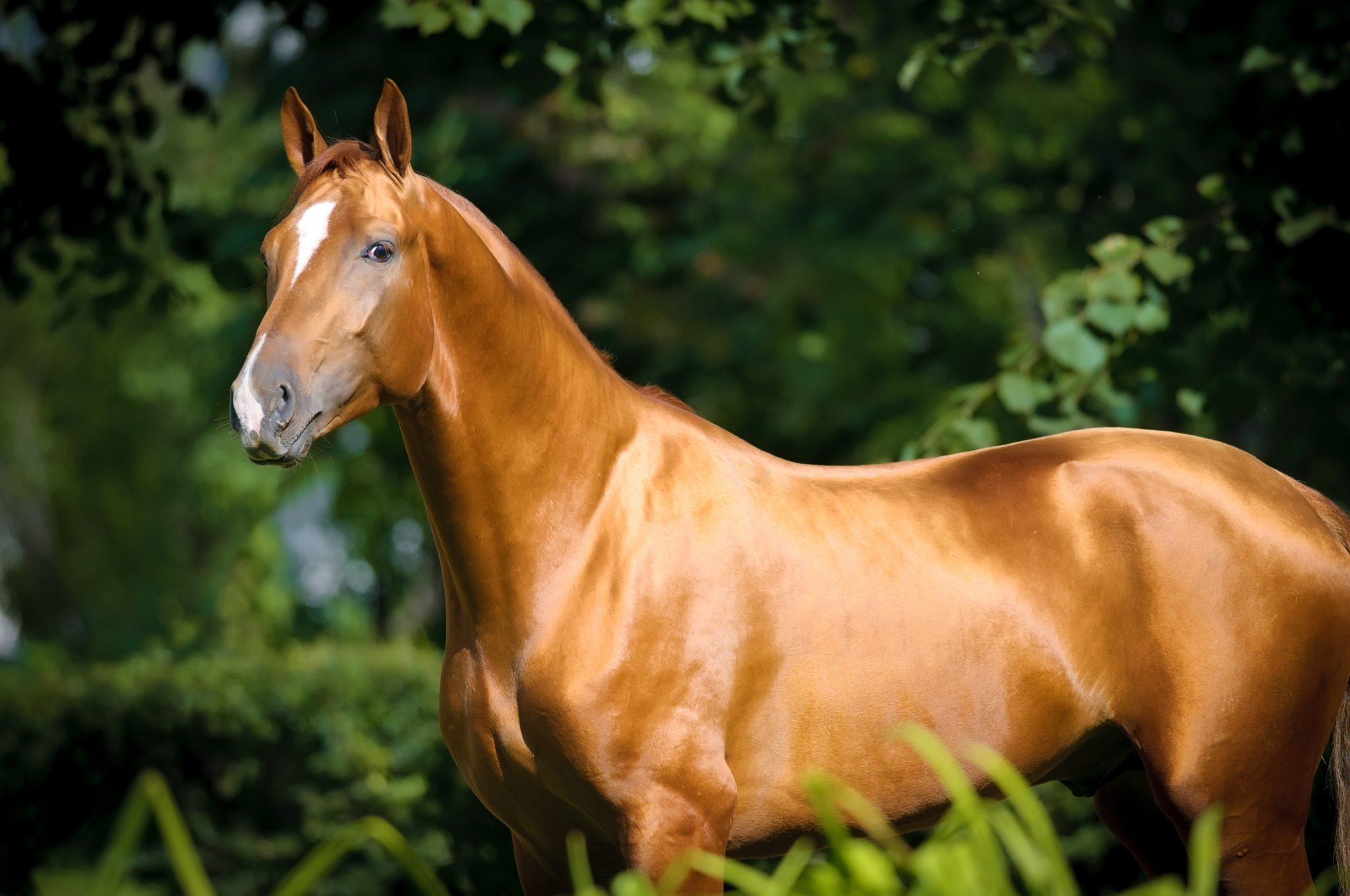Q: What can I feed to make my horse’s coat shiny?
A: Coat condition is a marker of your horse’s health, so before changing the diet, you should evaluate your horse’s overall health. You should check for worms with a faecal egg count, make sure that his teeth are in good shape and assess his general health status. These are all things that must be addressed prior to changing the diet.
In terms of improving the coat using nutrition, the first thing you need to check is that you are feeding sufficient forage to your horse. Forage is the foundation of a healthy diet as it promotes digestive health in the horse. Without good digestive health, a change in diet will have limited impact. Ideally, forage should be provided ad-lib, but your horse should never be receiving less than 15g (dry matter) per kg of his body weight.
Next up, you need to look at the balance of your horse’s diet. This is likely to involve the assistance of an equine nutritionist as some of these calculations can be complex. Nutrient deficiencies can affect coat condition, so providing a well-balanced diet is key to not only a healthy horse on the inside, but also a healthy coat on the outside.
Once you have established that there are no other health concerns, that you are feeding sufficient forage and that your horse’s diet is balanced you can consider looking at these factors to try and improve the shine further:
- Vitamin and mineral levels: Vitamin E deficiency or vitamin A excess or deficiency, can result in a long, scruffy, dull looking coat. Similarly, inadequate amounts of trace minerals such as zinc, copper and selenium can also influence coat quality, colour, growth and shedding. If you are concerned about vitamin or mineral levels, ask your nutritionist to calculate the quantities your horse is currently getting, and to recommend how to achieve optimal levels going forwards.
- Protein: Good quality sources of protein, particularly sulphur-containing amino acids (the building blocks of proteins) such as methionine, are very important in hair production and growth. You can find high levels of protein in a variety of feeds and supplements on the market.
- Oil: Horses’s diets typically contain 2-3% oil, so feeding additional linseed, rapeseed, or corn oil can help to provide an extra source of essential fatty acids for that ultimate coat sheen. It is also important to note that if you are feeding extra oil, you should check with your equine nutritionist about adding vitamin E as well. Vitamin E is required for the metabolism of oil so if insufficient is present, the oil will have no effect on the coat of your horse.
- Balancer: On a practical note, the easiest way to ensure your horse is getting a balanced diet is to feed a good quality balancer at the recommended level for your horse’s size and workload. Even if your horse doesn’t require hard feed to maintain his condition, it is still recommended that you use a balancer, in addition to his normal forage, to meet his daily requirements.
And finally, whilst good nutrition can certainly help to give your horse that show shine, you won’t get very far if you don’t put some work in with a body brush! Brushing your horse regularly keeps his coat clean and stimulates the blood flow to the follicles, enhancing the delivery of the nutrients to the hair to produce the shine you desire!

